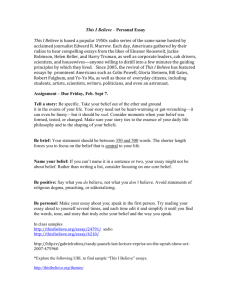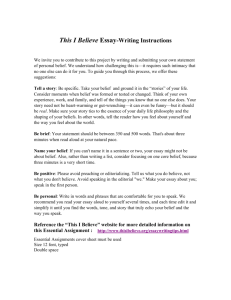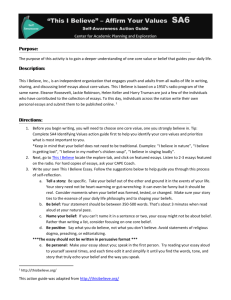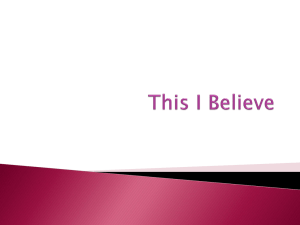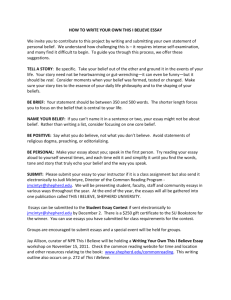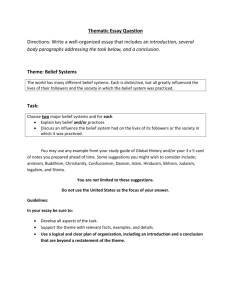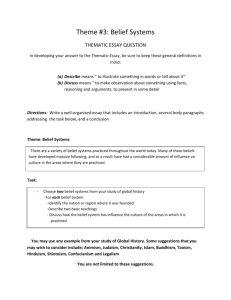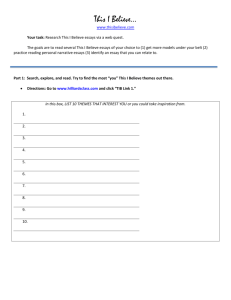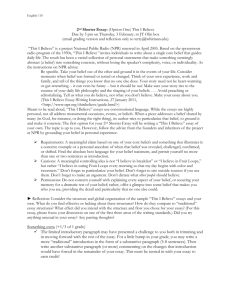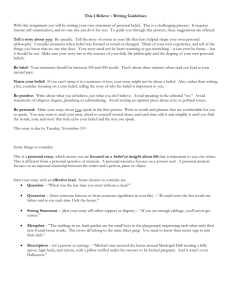This I Believe Essay Assignment: Personal Writing for High School
advertisement
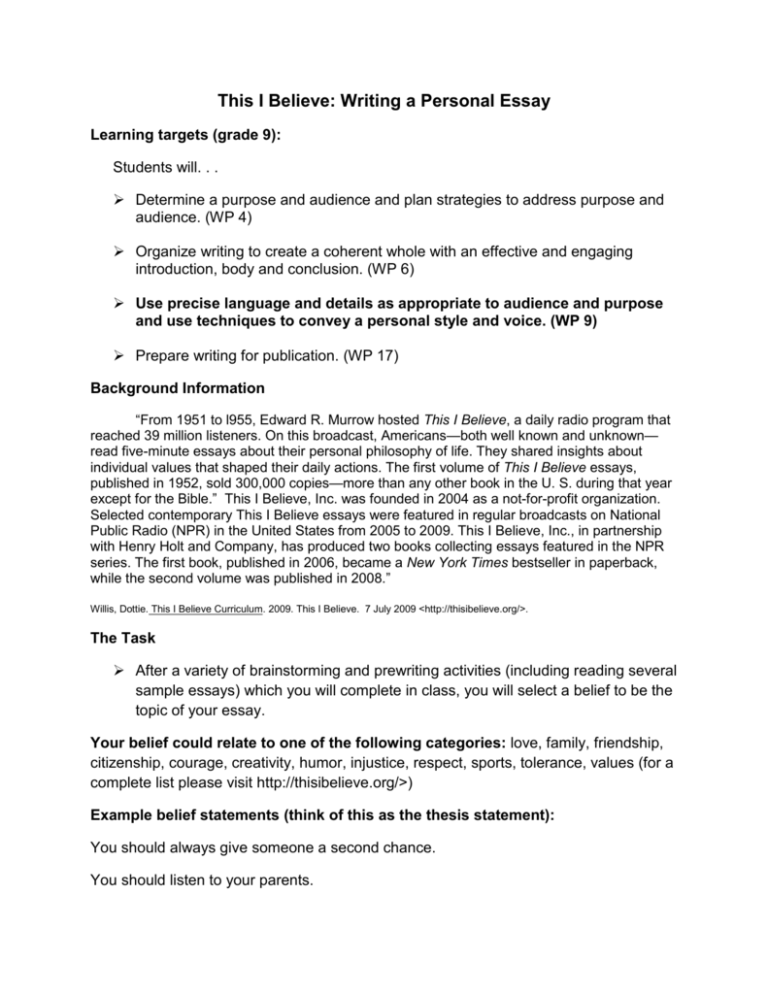
This I Believe: Writing a Personal Essay Learning targets (grade 9): Students will. . . Determine a purpose and audience and plan strategies to address purpose and audience. (WP 4) Organize writing to create a coherent whole with an effective and engaging introduction, body and conclusion. (WP 6) Use precise language and details as appropriate to audience and purpose and use techniques to convey a personal style and voice. (WP 9) Prepare writing for publication. (WP 17) Background Information “From 1951 to l955, Edward R. Murrow hosted This I Believe, a daily radio program that reached 39 million listeners. On this broadcast, Americans—both well known and unknown— read five-minute essays about their personal philosophy of life. They shared insights about individual values that shaped their daily actions. The first volume of This I Believe essays, published in 1952, sold 300,000 copies—more than any other book in the U. S. during that year except for the Bible.” This I Believe, Inc. was founded in 2004 as a not-for-profit organization. Selected contemporary This I Believe essays were featured in regular broadcasts on National Public Radio (NPR) in the United States from 2005 to 2009. This I Believe, Inc., in partnership with Henry Holt and Company, has produced two books collecting essays featured in the NPR series. The first book, published in 2006, became a New York Times bestseller in paperback, while the second volume was published in 2008.” Willis, Dottie. This I Believe Curriculum. 2009. This I Believe. 7 July 2009 <http://thisibelieve.org/>. The Task After a variety of brainstorming and prewriting activities (including reading several sample essays) which you will complete in class, you will select a belief to be the topic of your essay. Your belief could relate to one of the following categories: love, family, friendship, citizenship, courage, creativity, humor, injustice, respect, sports, tolerance, values (for a complete list please visit http://thisibelieve.org/>) Example belief statements (think of this as the thesis statement): You should always give someone a second chance. You should listen to your parents. Individuality is important. How you act in a crisis shows who you really are. You can’t depend on anyone else; you can only depend on yourself. Money can’t buy happiness. You will compose a 350-500 word personal essay about your belief. That’s about three minutes when read aloud at your natural pace. See the tips below and the rubric for specific details and expectations. Tips for Writing Your This I Believe Essay Tell a story: Be specific. Take your belief out of the ether and ground it in the events of your life. Consider moments when belief was formed or tested or changed. Think of your own experience, work and family, and tell of the things you know that no one else does. Your story need not be heart-warming or gut-wrenching—it can even be funny— but it should be real. Make sure your story ties to the essence of your daily life philosophy and the shaping of your beliefs. Be brief: Your statement should be between 350 and 500 words. That’s about three minutes when read aloud at your natural pace. Name your belief: If you can’t name it in a sentence or two, your essay might not be about belief. Also, rather than writing a list, consider focusing on a core belief, because three minutes is a very short time. Be positive: Please avoid preaching or editorializing. Write about what you do believe, not what you don’t believe. Avoid speaking in the editorial “we.” Make your essay about you; speak in the first person. Be personal: Write in words and phrases that are comfortable for you to speak. We recommend you read your essay aloud to yourself several times, and each time edit it and simplify it until you find the words, tone, and story that truly echo your belief and the way you speak. Willis, Dottie. This I Believe Curriculum. 2009. This I Believe. 7 July 2009 <http://thisibelieve.org/>.
